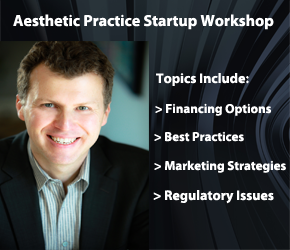The quest to keep our good looks
It used to be fairly straightforward. To improve your health, you went to the doctor. To improve your appearance, you went to the beauty parlor.
Now, it’s often possible to get a flu shot and a Botox injection in the same place.
A growing number of physicians are adding “aesthetic” services to their practices. They help their patients look younger by smoothing out wrinkles, removing unwanted facial hair, dissolving cellulite deposits, and erasing age spots, scars and spider veins.
Local dermatologists and plastic surgeons are devoting a large percentage of their practice to these techniques, but other types of doctors are jumping on the bandwagon as well.
“Just about anybody with an M.D. behind their name is doing cosmetic procedures,” said Bruce Parker, practice manager for Northeast Georgia Plastic Surgery Associates in Gainesville. “It’s getting more competitive, as more and more doctors are doing these services.”
About a year ago, the practice was “rebranded” as the Aesthetic Center of Gainesville. Parker said about 55 percent of its business is still reconstructive plastic surgery, which is considered medically necessary and is reimbursed by insurance.
The other 45 percent is cosmetic procedures, with breast augmentation being the most popular surgery. But the practice also offers nonsurgical services, such as Botox injections.
“(Elective) plastic surgery is down, because of the economy,” said Parker. “But nonsurgical procedures are pretty steady.”
Cosmetic procedures increase doctors’ profits
Because demand is so high, many doctors see aesthetics as an opportunity to enhance their income.
“It’s necessary these days to have something that doesn’t involve insurance or Medicare,” said Dr. Andrew Reisman, a family medicine physician at the Longstreet Clinic’s Oakwood branch.
He said insurance reimbursement for primary care is so low that doctors can barely break even.
“I really do love family medicine and will probably never completely quit,” said Reisman. “But money is a factor. No medical students want to go into family practice because it doesn’t pay anything.”
Four years ago, while attending a dermatology seminar to earn continuing education credits, Reisman saw a demonstration of Botox injection and was intrigued.
Botox is a purified derivative of the toxin that causes botulism poisoning. When injected, it paralyzes and relaxes the facial muscles, making wrinkles less noticeable.
After about eight hours of hands-on training, Reisman began performing Botox injections on his patients who asked for it. He then became interested in other cosmetic techniques, such as Lipodissolve, a nonsurgical alternative to liposuction.
Two years later, Longstreet created the Center for Laser & Aesthetic Services at the Oakwood office. After seeing his regular patients during the day, Reisman performs cosmetic procedures in the evening.
Two days a week, the clinic also has a nurse practitioner, April Bussoletti, who’s been trained to do all the same techniques.
Bussoletti worked as a medical nurse for years, but when she decided to specialize in aesthetics, some of her colleagues said she wasn’t a “real” nurse practitioner anymore.
Bussoletti acknowledges that she’s no longer treating sick patients. But she said she’s helping people to feel better about themselves.
“It can be very rewarding and life-changing for some people,” she said.
Her clients often feel insecure and self-conscious about their appearance. Bussoletti said because she is a nurse, people seem to be able to talk to her about things they would be too embarrassed to reveal to anyone else.
And contrary to the stereotype, her clients are not necessarily vain, rich and self-absorbed. “These are not wealthy people,” she said. “They are average, middle-class, working Americans.”
Patients spend cash to look younger
They are also usually baby boomers who find it hard to deal with the fact that their bodies are aging. Retaining a youthful appearance is important enough to them that they’re willing to make a considerable financial sacrifice.
Reisman said at least 90 percent of his cosmetic patients are women, and typically they don’t want their family and friends to know their having these procedures done.
“I have patients who spend their own money and they’d never let their husbands know they were having this,” he said.
Both Reisman and Bussoletti said they like having a direct relationship with the patients. “You don’t have to deal with insurance,” said Bussoletti. “(The patients) tell you what they want, you give them a price, and they decide whether they want to pay it or not.”
Reisman said patients usually start out with something simple like Botox, and when they see the results, they want to try other procedures such as Lipodissolve or microdermabrasion. Since most techniques require multiple treatments, a patient may end up spending several thousand dollars.
To make it more affordable, the clinic offers CareCredit, a plan that allows people to pay in low monthly installments.
In the regular health care system, patients are given whatever treatment the doctor thinks is necessary, and there is rarely any discussion about what it will cost. But because cosmetic procedures are 100 percent self-pay, patients are acutely aware of the price.
The Aesthetic Center of Gainesville has been running ads promoting its 24-month financing plan, without even mentioning what services the practice offers.
Parker said that’s because people have to be convinced they can afford cosmetic procedures, before they even think about exactly what they want to have done.
“You have to do a lot of marketing,” he said.
Should doctors just practice medicine?
There’s no question that aesthetics can be profitable. But it’s also reasonable to ask whether this is the best way for highly trained physicians to spend their time.
Reisman doesn’t see a conflict. “This is a way for me to use my skills as a physician and to help people, without insurance cutting my fee by 50 percent,” he said.
Some doctors say aesthetics is just a bonus for patients and does not detract from the focus on healing the sick.
Last year, the Neighborhood Healthcare Center at Chestnut Mountain, one of Northeast Georgia Health System’s primary care clinics, began offering painless cosmetic procedures using an FDA-approved machine called PPX.
“We see this as an extension of our services. We don’t plan on becoming a mini-spa,” said Dr. Angela Ritter, a family medicine physician at Chestnut Mountain. “Our patients were seeing doctors offer this in other places, and we thought they might feel more comfortable having it done in the primary care setting.”
Ritter said the goal was not to increase revenue, but the service has brought in a few new patients who had been searching the Internet for a place that offers PPX.
She said within a few months, the clinic will be offering additional cosmetic procedures such as Botox.
“We’re doing it because the patients have asked about it,” she said. “I would never suggest a cosmetic procedure if the patient didn’t bring it up first.”
Ritter said aesthetics seemed like a natural fit for a family medicine practice. “Family practitioners are interested in the entire body and want to treat the whole patient, at every stage of life,” she said.
Gainesville has shortage of dermatologists
But there is a controversy surrounding aesthetics. There’s only so many hours in a day, and the more time a physician spends doing cosmetic procedures, the less time he has to treat patients who have actual diseases.
This has been a particular concern in dermatology. In Gainesville, it takes two to three months to get an appointment with a dermatologist.
In some parts of the country, there have been reports of dermatologists giving preferential treatment to their high-paying cosmetic customers while the medical patients have to wait longer for an appointment. But there’s no evidence that this is happening in Gainesville.
“It does take a couple months to get a referral to a dermatologist,” said Ritter. “But I think that’s just because there’s a shortage of physicians in that specialty.”
Gainesville used to have only one major dermatology practice. Now there are two, but each practice has only two physicians. Their services are in high demand, especially as the area’s population ages.
“We were being bombarded with dermatology calls (at our plastic surgery practice), because people couldn’t get an appointment to get a skin lesion looked at,” said Parker. “But we don’t have the resources to handle that. We had to narrow it down to biopsy-proven skin cancers.”
Elaine DiMaggio, practice manager of North Atlanta Dermatology, said they see a number of Hall County patients at their Buford office.
“All three of our offices (the other two are in Duluth and Suwanee) stay booked up, but if someone has an urgent problem, we try to work them in,” she said.
DiMaggio said North Atlanta Dermatology seems to be among the few that is not riding the aesthetics wave.
“Maybe 20 percent of our practice is cosmetic,” she said. “And most of the patients who have cosmetic things done are already seeing us for other things. If they want Botox or something like that, we’ll do it, but they have to ask for it. We don’t promote it.”
DiMaggio said there’s never going to be a shortage of patients who have skin problems, and she feels her practice can stay afloat financially without having to open an aesthetics center.
“Our physicians’ primary concern is that patients have a full-body exam once a year for skin cancer,” she said.
source: http://www.gainesvilletimes.com/news/article/8140/





